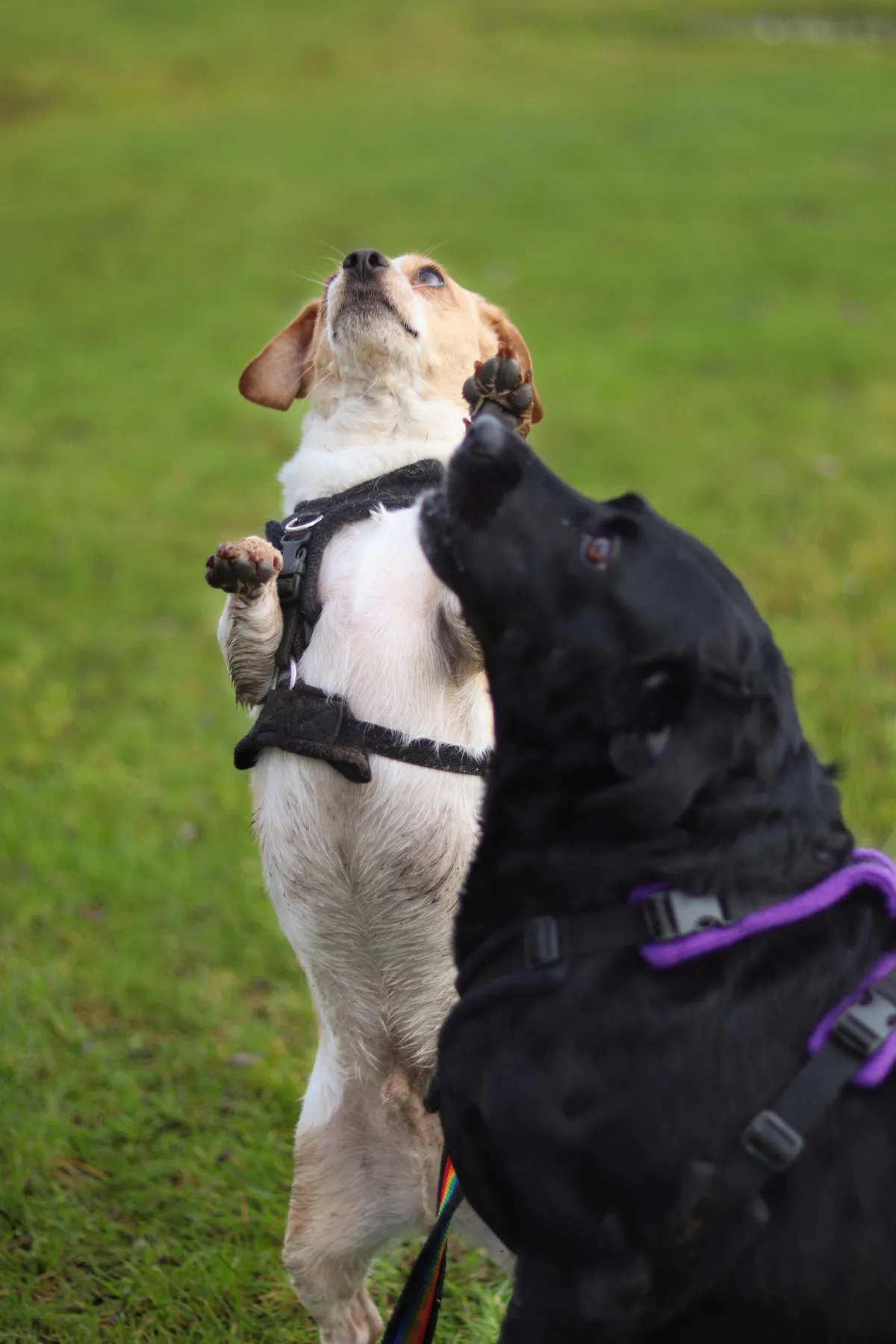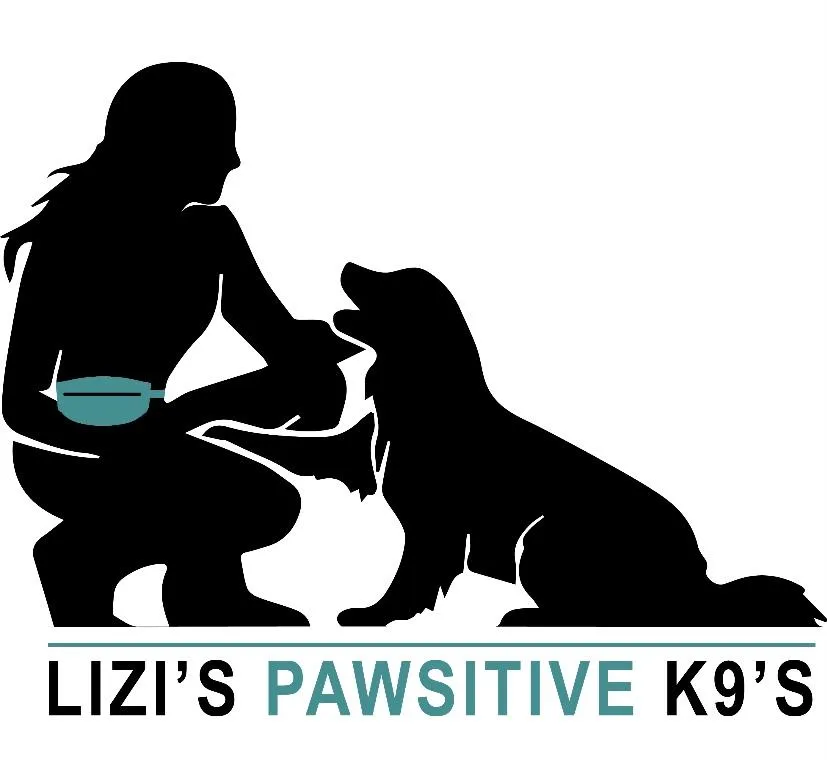Your trusted partner for dog training and grooming in London
What We Offer

You’ll enjoy knowing my dedicated team will do whatever is needed to keep your pets happy,
healthy and safe when you’re away from home.

Group Training
Canis certified dog trainers specialize in behavior.

Private Training
We are recommended by veterinarians and animal

Virtual Training
We train puppies 8 weeks and older, and adult dogs of any age.


Specialty Program
Canis has excellent training that can help rehabilitate dogs.

Puppy Training
Private lessons begin with a hands-on evaluation of puppy.

Security Program
We use modern management, and classical counter techniques.
Ready to Dive Deeper into Dog Behaviour? Join Our Blog Community Today!

Why Positive Reinforcement?
I will only ever use positive reinforcement methods when I train dogs and their owners (and yes, we do train you as well!). For a number of reasons.
It's more fun for both the owner and dog and helps to reinforce and cement in what the dog has learnt. The more they learn, the more fun they have, the more reinforced the behaviours become. And the more we develop our methods as trainers and owners, the more our dog will understand what we are asking because there's an incredible reward at the end of it.
There's no force involved. Ever. Any trainer using forceful methods or outdated equipment, will potentially cause damage to your dog. Imagine being told you can have a glass of wine, but it involved you having to run through barbed wire first. I tell you now, i wouldn't even attempt it. Turn that into a dog situation, if they're forced or it causes pain, they will only repeat that behaviour to avoid the pain happening again. Which is negative reinforcement, and very outdated.
The science proves it works! There are so many tv show dogs, so many books to read as owners; make sure you only use positive methods and you'll probably never watch a tv dog trainer again. By working with the dog in front of you and building a bond between you using positive methods, you'll see a dramatic change in both the dog and how you train your dog. And how your relationship grows too.
As trainers we bang on about making training fun, making sure you mark and reward the behaviours that you want, and your timing in the hand signals, the equipment you use, how you are communicating with the dog (even though you might not think you are),the verbal cues, the delivery of the treat. And that's because we want to set you up to suceed as an owner and help you to realise how much you can change your dogs life. And for you to set your dog up to suceed. We can't as owners expect our dogs to understand how a spin works or how a wait works if we aren't reinforcing that the dog is doing things correctly.
As Steve Mann (IMDT owner and trainer) says, Be the Change. Change your ways, change how you work with your dog (not work your dog) and you'll start to see how much the science proves that positive reinforcement works. Put the time in now, short training sessions, fun sessions, don't ever train when you're tired and stressed because that will have a negative effect on the dog too. Think situations, don't exect 30 seconds sits when you're in a busy place and that behaviour hasn't been fully bomb proofed. There is no shame in taking training back a step and using your 4 D's to your full advantage.
You'll watch your pup flourish and grow, and you'll be suprised at how you as an owner and guardian develops your training skills too.
The more you train, the more concious you are of your behaviour as well, which can only benefit the dog in front of you.
If it's not working, change it up, do something different, do some enrichment, or simply just take a day off! There is no shame in not working with your dog because you're exhausted or not in the mood, If anything, that will have a more negative effect.
Again, setting yourself and your dog up to succeed. By using positive reinforcement methods. Because it works. Trust me! And, be the change. Help your dog to understand what you're asking of them.

Why Positive Reinforcement?
I will only ever use positive reinforcement methods when I train dogs and their owners (and yes, we do train you as well!). For a number of reasons.
It's more fun for both the owner and dog and helps to reinforce and cement in what the dog has learnt. The more they learn, the more fun they have, the more reinforced the behaviours become. And the more we develop our methods as trainers and owners, the more our dog will understand what we are asking because there's an incredible reward at the end of it.
There's no force involved. Ever. Any trainer using forceful methods or outdated equipment, will potentially cause damage to your dog. Imagine being told you can have a glass of wine, but it involved you having to run through barbed wire first. I tell you now, i wouldn't even attempt it. Turn that into a dog situation, if they're forced or it causes pain, they will only repeat that behaviour to avoid the pain happening again. Which is negative reinforcement, and very outdated.
The science proves it works! There are so many tv show dogs, so many books to read as owners; make sure you only use positive methods and you'll probably never watch a tv dog trainer again. By working with the dog in front of you and building a bond between you using positive methods, you'll see a dramatic change in both the dog and how you train your dog. And how your relationship grows too.
As trainers we bang on about making training fun, making sure you mark and reward the behaviours that you want, and your timing in the hand signals, the equipment you use, how you are communicating with the dog (even though you might not think you are),the verbal cues, the delivery of the treat. And that's because we want to set you up to suceed as an owner and help you to realise how much you can change your dogs life. And for you to set your dog up to suceed. We can't as owners expect our dogs to understand how a spin works or how a wait works if we aren't reinforcing that the dog is doing things correctly.
As Steve Mann (IMDT owner and trainer) says, Be the Change. Change your ways, change how you work with your dog (not work your dog) and you'll start to see how much the science proves that positive reinforcement works. Put the time in now, short training sessions, fun sessions, don't ever train when you're tired and stressed because that will have a negative effect on the dog too. Think situations, don't exect 30 seconds sits when you're in a busy place and that behaviour hasn't been fully bomb proofed. There is no shame in taking training back a step and using your 4 D's to your full advantage.
You'll watch your pup flourish and grow, and you'll be suprised at how you as an owner and guardian develops your training skills too.
The more you train, the more concious you are of your behaviour as well, which can only benefit the dog in front of you.
If it's not working, change it up, do something different, do some enrichment, or simply just take a day off! There is no shame in not working with your dog because you're exhausted or not in the mood, If anything, that will have a more negative effect.
Again, setting yourself and your dog up to succeed. By using positive reinforcement methods. Because it works. Trust me! And, be the change. Help your dog to understand what you're asking of them.
Stay Informed and Empowered – Subscribe to Our Blog Now!
Welcome to Lizi's blog, your go-to resource for all things dog behaviour! Whether you're a seasoned dog owner or a new pup parent, our blog is here to provide you with valuable insights, expert tips, and engaging stories about understanding and improving your dog's life. From separation anxiety to leash manners, we cover it all. Join our blog community and embark on a journey of learning, growth, and stronger bonds with your companion.
Get in touch via our contact form regarding all our services
Email: [email protected]
© 2025 Lizi's Pawsitive K9's - Privacy Policy | Terms and Conditions | Terms and Conditions of Service | Sitemap
